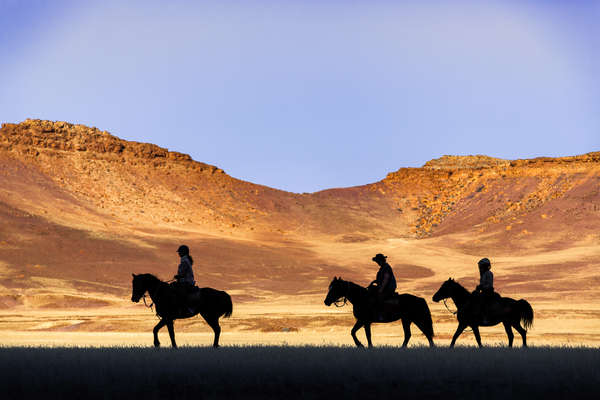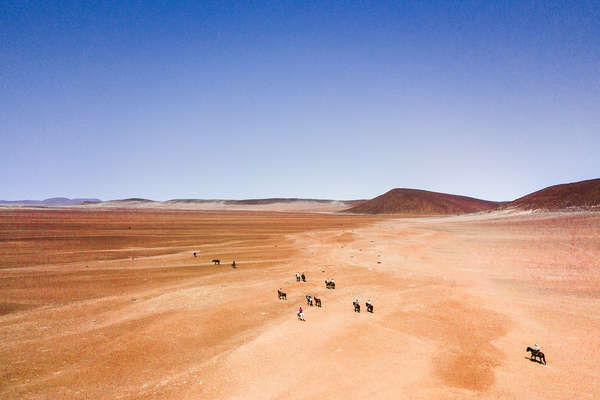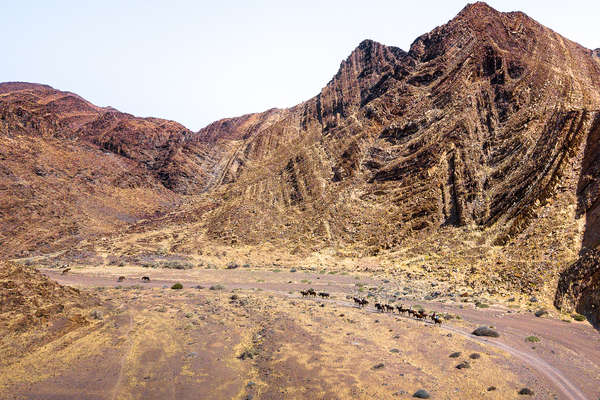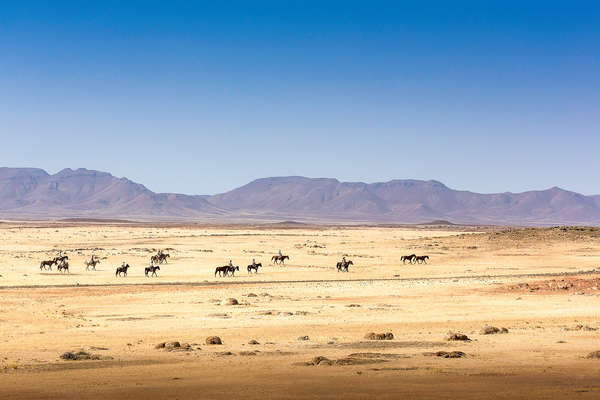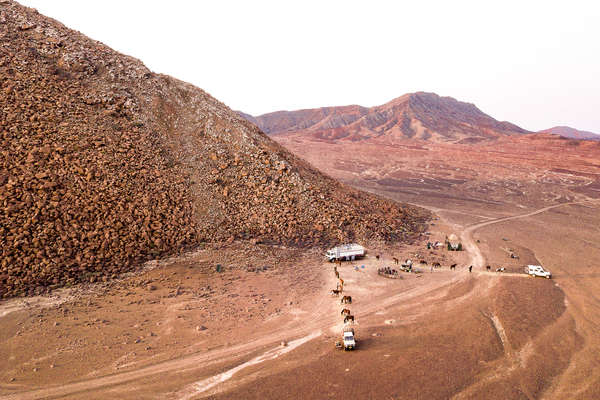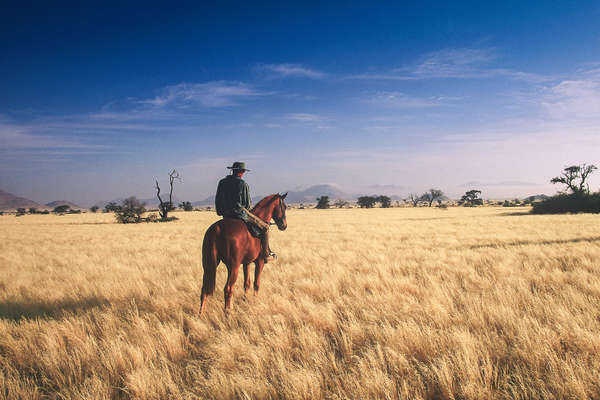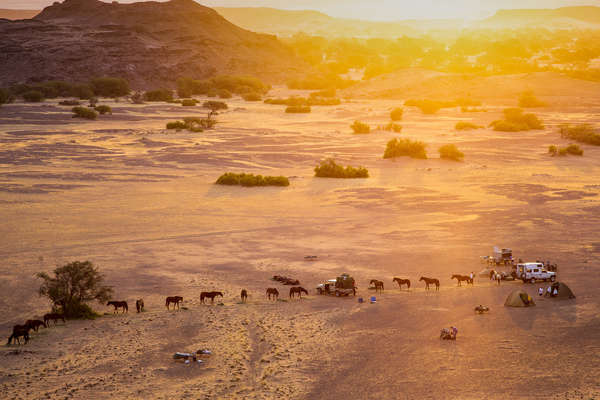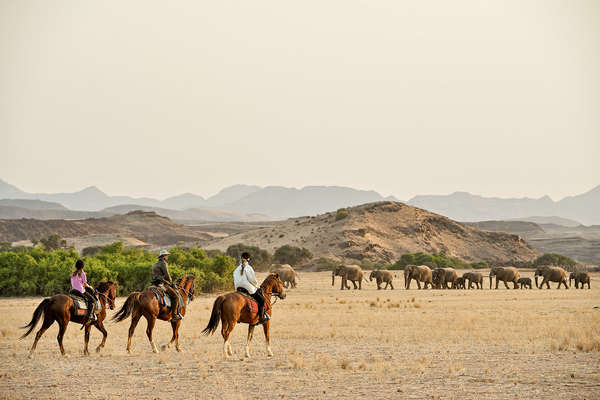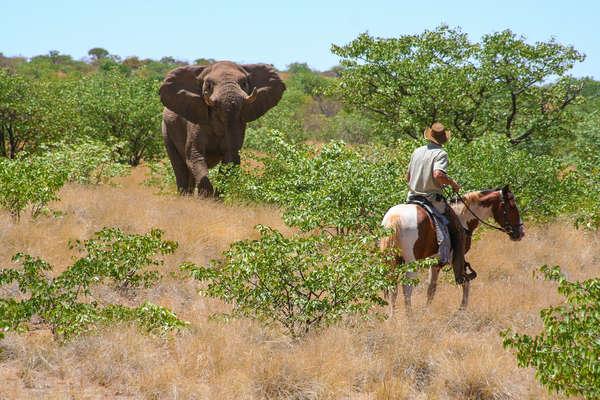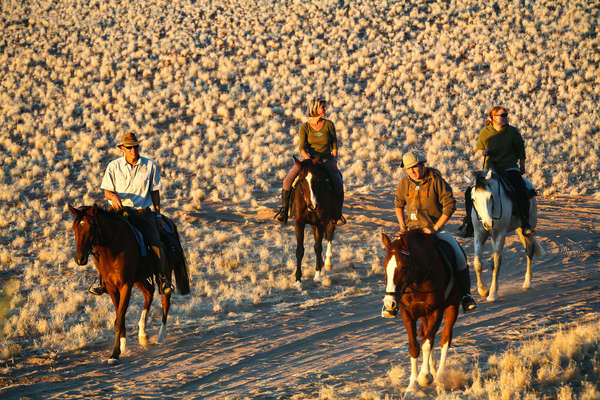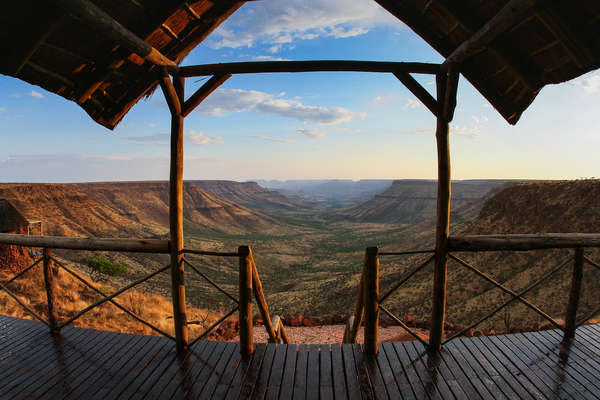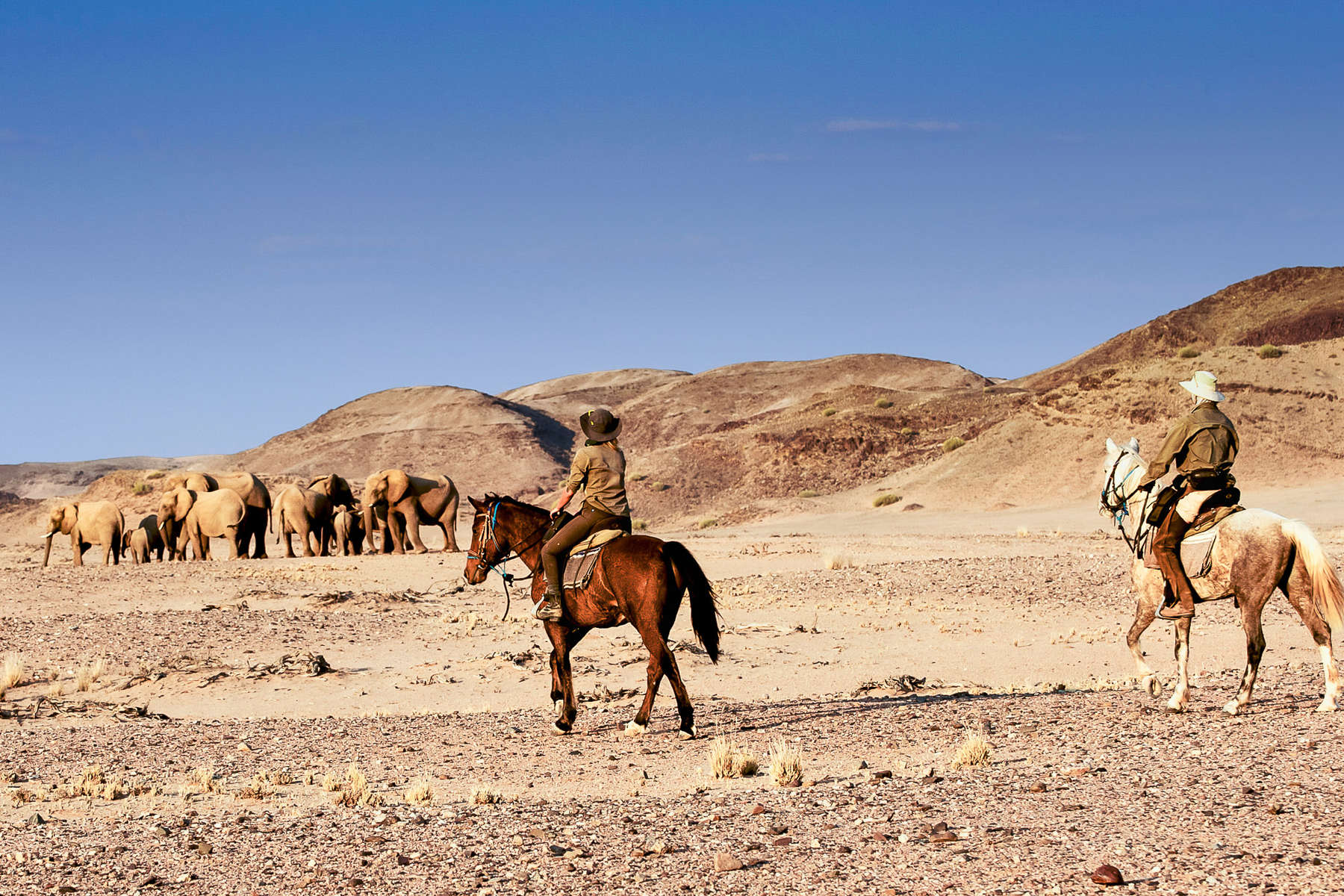
Itinerary
Highlights
- Dramatic landscapes, geological formations and rock engravings
- Opportunities to gallop on the beaches of the Skeleton Coast
- Occasional flooding of dry riverbeds can add excitement to this itinerary!
- Optional flight over the desert of Namib and dunes of Sossusvlei for unforgettable memories
Dates & prices
Price details
- Rates are per person, based on two riders sharing a twin or double room/tent during the ride.
- Groups are composed of a minimum of 4 international riders and a maximum of 12 riders, plus guides.
- There is no single supplement if you are willing to share a room/tent with another guest of the same sex (guests usually sleep under the stars without requiring a tent). To guarantee your own room at the two lodges on arrival/departure there is a single supplement of £220/€255/$280 in 2025, £235/€260/$300 in 2026, £250/€290/$335 in 2027.
- Transfers to and from Windhoek airport are included.
- There is a weight limit of 92kgs and riders who weigh over 85kgs may have to pay a supplement for a second horse of £850/€985/$1075 in 2025, £900/€1050/$1150 in 2026-2027.
Please Note
The itinerary may be modified at anytime for security reasons, meteorological or events beyond our control such as blocked roads, rivers in flood, drought, strikes and local holidays. Equus Journeys, our local partners and their local guides will always strive to find the best solution and will alter the itinerary as needed.
The names of the hotels and accommodation are given for information only and depending on availability, they may be modified without notice and replaced by another of a similar standard.
Price includes
Support Team
Logistics
1 support vehicle
1 horse equipped with saddle and bridle per rider
Inland transports
Airport transfers from Windhoek
Accommodation
Meals
Price doesn't include
Meals
Transport
Extras
Insurance
Visas and personal purchase
Optional
Accommodation
Logistics
Equestrian info
Horses
Please note: riders weighting over 85 kilos / 14 stones please are accepted, but will have to pay an additional fee as two horses will be used to keep them in top-notch condition.
Guide & local team
Minimum riding ability
Minimum riding ability
PLEASE NOTE: There is a weight limit of 92kgs and riders who weigh over 85kgs may have to pay a supplement
Pace
Tacking ability and participation
Trip conditions and Requested experience
Guests who do not ride regularly need to get fit prior to the ride.
Equestrian equipment
Saddles are endurance-type trail saddles. If you want to bring your own seat saver then you will need a western shaped one.
We recommend our riders to wear a helmet to the correct standard and you should bring your own to ensure a proper fit.
Travel info
Comfort
Showers are available every night (hot water). It is however not possible to wash your belongings during the ride.
Small batteries can be charged in the back up vehicles if necessary. Phone signal is very limited and there is, of course, no wifi!
Meals
Breakfast usually consists of porridge or cereal with tea and coffee.
Lunch: proper meals cook by the local team.
Dinner will be meat (beef or lamb usually) with vegetables and a dessert.
Drinks are included throughout the trail except on the first and last night when you are in a lodge.
Vegetarians and special diets can be accommodated with advance notice.
Climate
From April to September, the winter months, the weather is usually cool and dry. The nights can be cold, dropping to zero or below, but the days are sunny with a beautiful blue sky. Daytime temperatures are usually 15-22c. Mid-winter (June-August) is cooler than the spring/autumn months of April/May and September.
Tips
Packing list
Head
- Equus Journeys strongly recommend that you wear a riding helmet and that you take your own to ensure a correct fit.
- Sunhat for when not riding
- Sunglasses - with a cord attached so they don't fly off when riding
- Buff or bandana (essential)
Upper body
- Long sleeved shirts provide protection from the sun and thorns
- T-shirts
- Fleece, jumper or jacket - the evenings can be cold
- Waterproof jacket - the rains can be difficult to foresee and it's better to be prepared. Layering is key to cope with the fluctuations in temperature between day and night
- Casual clothes for the evening
Legs
- Lightweight, comfortable riding trousers or jodhpurs - we recommend riding in them at home before taking them on holiday to ensure they don't rub
- Shorts for non-riding trips
- Casual clothes for the evening
Hands and Feet
- Comfortable riding boots. We recommend short boots with half chaps but you may wish to take long chaps to protect against thorns. We don't recommend taking your favourite long leather boots in case they get damaged
- Sandals, flip-flops or trainers for moving around the lodge and camp
- Gloves - your hands are particularly exposed to the sun whilst riding
Nightwear
- Thermals are a good option for sleeping in, or tracksuits
- A woolly hat when camping
- Warm and comfortable sleeping sacks are provided, but if you feel the cold you may wish to bring a fleece liner as an extra layer
Other useful items
- Towel (not provided)
- Swimsuit
- Sarong (for going to/from showers)
- Binoculars for viewing game
- Camera and high capacity memory card. Spare battery
- Bumbag for carrying your camera and small items whilst riding
- Headtorch or small torch for moving around camp at night
Medical kit
- Sunscreen and lip balm - must be high factor
- Insect repellent, preferably containing deet
- Any medication you regularly take
- Blister plasters in case of any rubs
- Antiseptic cream, plasters, aspirin, anti-histamine, insect-bite salve etc...
- Spare prescription glasses/contact lenses
- Ear plugs, particularly if you are a light sleeper
- Anti malarial tablets and Yellow Fever Certificate if required (check with your doctor)
Our Recommendations
- Please don't take a hard sided suitcase. Your luggage should be soft sided and you should pack it into two bags if it weighs more than 15kg so it's easier for the team to transport between camps
- Wherever possible you should wear neutral colours, such as beige, brown or natural bush colours for riding as bright colours, such as red, yellow or white can startle the wildlife and they will see you long before you've seen them
- We recommend travelling in your riding boots and carrying your hat and some riding clothes in your hand luggage - then if your luggage goes astray you are still able to ride!
Sustainable tourism
- Travel light. It's a little known fact, but the lighter you pack, the better for the environment as heavy bags will produce higher emissions (when flying a plane or driving a car!).
- Reduce plastic waste. Take your favorite reusable bottle with you. Avoid single-use bags, cups, or straws.
- Preserve nature. Always take your rubbish with you during the ride and recycle them. Leave all the flowers or plants as you found them, and never get too close when observing wildlife. Make sure to use eco-friendly products such as body wash or laundry detergent (if camping) to protect both your skin and the environment.
- Choose your experiences carefully. Respect animal life by not participating in any activities that abuse wild animals (shows, elephant rides, etc.).
- Support local populations. Buy local handicrafts, be respectful of customs, and learn about the culture of local communities.
- Share! Raise awareness among your family and friends about sustainable tourism.
Did you know?
Did you know?
The black rhino's of Namibia have adapted to survive in the desert and the population are unique for many reasons. Normally rhino drink every day, but the rhino in north-western Namibia can go three or four days without drinking. They are also able to digest highly toxic desert plants, such as the Euphorbia damarana - a succulent plant which is deadly to humans - which means that when there has been no rain for months and all other plant species have died, they are still able to survive. They can tolerate temperatures below zero at night and up to 40c or higher during the day and can cover large distances in search of food and water, having home ranges of up to 500-600km2.
If you are lucky you may see one of these prehistoric looking mammals whilst on a riding safari in the Damaraland.

